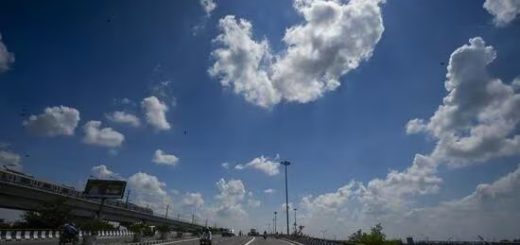Top 10 Supply Chain And Logistics Technology Trends in 2025
Commercial goods transformation is indispensable for turning low-level businesses into high-level ones. In other words, associated service benefits are available to all concerned end-users. Is it possible to introduce a surprising outcome with technological advancement? The current supply chain management needs related technology benefits to improve efficiency and accuracy in goods transportation.
AI-powered solutions and autonomous drones are the main contributing factors to accomplishing resource-moving work much better. Anyway, AI usage makes logistics faster and smarter. The robust addition of different technologies makes their work deeper than the rest. For instance, one can maintain transparency and security that makes their transaction safe and secure.
Another technology trend is blockchain technology which puts transparency and security to stay away from customers’confusion. No matter what transaction you do, it is safe and traceable. Besides, an individual tracks real-time order, predictive maintenance, and streamlined operation. On the other hand, autonomous vehicles and drones redefine last-mile delivery.
Top 10 Trends Used In Supply Chain And Logistics
If you merge all relative trends in the 2025 business market, then you are bound to gain unprecedented growth in the logistics and supply chain domain. Read all trends one by one and determine what trend is good for your business as well.
1. Artificial Intelligence Integration:
AI acceptance in your logistic work gives a great push at any cost. It works on intelligent sourcing, optimized supplier selection, and fulfilling all required demands. In addition to this, machine learning algorithms are prerequisites for better decision-making, route optimization, and quality control.
By using it in their supply chain-based work, they are governed to achieve enhanced customer experience. Besides, they are bound to gain faster delivery and cost reduction.
2. Blockchain Technology:
Blockchain technology has a significant role in the logistics industry as it provides a secure, traceable, transparent record of all transactions. As a result, there is high visibility, no fraud incidence, and improved efficiency for all stakeholders.
The main aspect of this trend is to have verified customer reviews, certification, and product quality. The professionals showcase their interest in contract creation. Now, you do not feel confused about the acceptance of blockchain technology. The moral of the story is that it improves trust and efficiency.
3. Internet of Things:
There is no need to bother where your order lies in the transit process. The real-time tracking in the Internet of Things makes you carefree for the visibility of your product and service. As a result, you do not have the challenge of predictive maintenance and waste reduction. There is no need to put extra effort into better inventory management, optimized logistics cost, increased efficiency, and improved customer satisfaction. We tell you overall delivery estimates and transparency for the happening of personal delays.
4. Autonomous vehicles and Drones:
The acceptance of autonomous vehicles and drones will streamline challenges related to the long distance. The best route utilization will bring you close to shortening delivery time and cutting operational costs. Using these technologies is effective in reducing human effort for goods transportation. These technologies make good transportation efficient and cost-effective. These services are the prime choice even though you have a hard-to-reach area.
Also Read:- 8 Essential Tips for Choosing the Right Logistics Partner
5. Advanced Robotics:
Robotics in supply chain technology improves operational efficiency because it automates warehouse-related activities. Unlike human beings, they are ready to work throughout the day. They never mimic to get exhausted. Furthermore, they are likely to have less error which makes your operational cost cheap. Eventually, your supply chain service experiences lower costs, better customer service, and responsive supply chain management.
6. Supply chain Resilience and Risk Management:
Supply chain management is expanding its business network and adopting advanced technology. The professionals involved intend to offer the most valuable outcome. They will identify and mitigate the disruptions and maintain the operational business stability. They work in such a way that they recover from unexpected incidents and deliver products to users at a committed time. No matter what challenge is going on, we are committed to providing excellent product delivery. We keep only one goal in mind to keep customers’ trust and all associated competitive advantages.
7. Sustainability and Green Logistics:
Transporting your commercial resources from one place to another place does not mean spoiling your surrounding environment. If you keep sustainability and green logistics, you tend to see reduced emissions. There is no pathway for eco-friendly packaging or efficient warehouse operation. Last but not least, you can improve the company’s brand image, cost savings, and compliance with the environment.
8. E-commerce and omnichannel logistics:
E-commerce and omnichannel are helpful to make a seamless customer experience using multiple platforms. It does not matter whether you are using online or offline platforms to capture your targeted audience. It is effective for inventory management, online order fulfillment, and improved order efficiency.
Any customer does not find a bad experience here as it offers flexible delivery options. There are no hard rules and regulations for your product. It is up to you whether you need the same-day delivery or other specific dates. This trend will conduct your delivery on the scheduled date and time.
9. Cybersecurity:
Data is the main asset of any organization, and one should not mind to protect their data. That’s why there is a need to implement security measures with implementing the deserved practice. So, they go ahead with data encryption, access control, and security control to minimize the related risk and ensure business continuity.
10. Employee Upskilling:
The current age is AI and automation to speed up the business throughput. So, an individual should be firm-minded to adopt technological advancement. It means that they must upskill alongside the learning and implementation of technology. So, there is a need to attend training programs and learn all morals from the heart. By doing so, they tend to attain improved and new roles. So, it also creates new jobs and business opportunities.
Conclusion:
Do not insist on the conventional practice for implementing the Supply chain logistics. Otherwise, output efficiency is not according to the end user’s expectation. Believe it or not, the above trend will define the supply chain industry work. If you have a passion for this service, then you hire the best professionals to boost supply chain efficiency.




Recent Comments